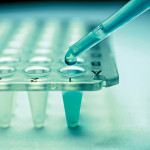Healthy bacteria limits the amount of HIV detected in the genital secretions of women infected with the virus, according to new research presented this week at the 15th Conference on Retroviruses and Opportunistic Infections (CROI). The presenting authors hope that their findings, suggesting that HIV-positive women with healthy levels of vaginal Lactobacillus may be less likely to transmit the virus, will lead to additional research testing Lactobacillus supplementation as a potential prevention strategy.
The research was presented at CROI by Jane Hitti, MD, associate professor of obstetrics and gynecology at the University of Washington (UW) School of Medicine in Seattle and colleagues at UW and the University of Rochester Medical Center in Rochester.
Dr. Hitti’s group examined the mix of bacteria in the vaginas of 57 HIV-positive women. They monitored vaginal levels of Lactobacillus as well as hydrogen peroxide, which is produced by the bacteria and is believed to hinder the virus (as well as the overgrowth of harmful bacteria and fungi).
The Lactobacillus bacteria normally found in the vagina is a close cousin of the healthy bacteria detected in the small intestine and often found in yogurt.
Every three months or so—for an average of two years—the researchers also monitored HIV levels in genital secretions from the women, also looking out for sexually transmitted infections like trichomoniasis, gonorrhea and chlamydia.
While test tube studies previously indicated that Lactobacillus might help prevent HIV infection in women, Dr. Hitti’s group actually established a strong association between decreased levels of the virus in the vagina with the presence of hydrogen peroxide-producing Lactobacillus. Dr. Hitti reported that, when Lactobacillus was present in the women’s vaginas, there was a threefold reduction in their genital secretion viral loads.
The researchers also found that the amount of the virus in the vagina varied, in step with the presence of Lactobacillus. Women who had low levels of the bacteria during early clinic visits, but then had higher levels of Lactobacillus during subsequent visits, saw their vaginal HIV levels drop. Similarly, vaginal HIV levels increased in women in whom the good bacteria had disappeared between visits.
“These findings underscore the importance of maintaining a healthy, Lactobacillus-dominant vaginal flora for HIV-positive women,” said Dr. Hitti. “I hope that we can explore Lactobacillus replacement in the future for women who do not have this bacteria, as a strategy to decrease the amount of HIV in the vagina.”





2 Comments
2 Comments